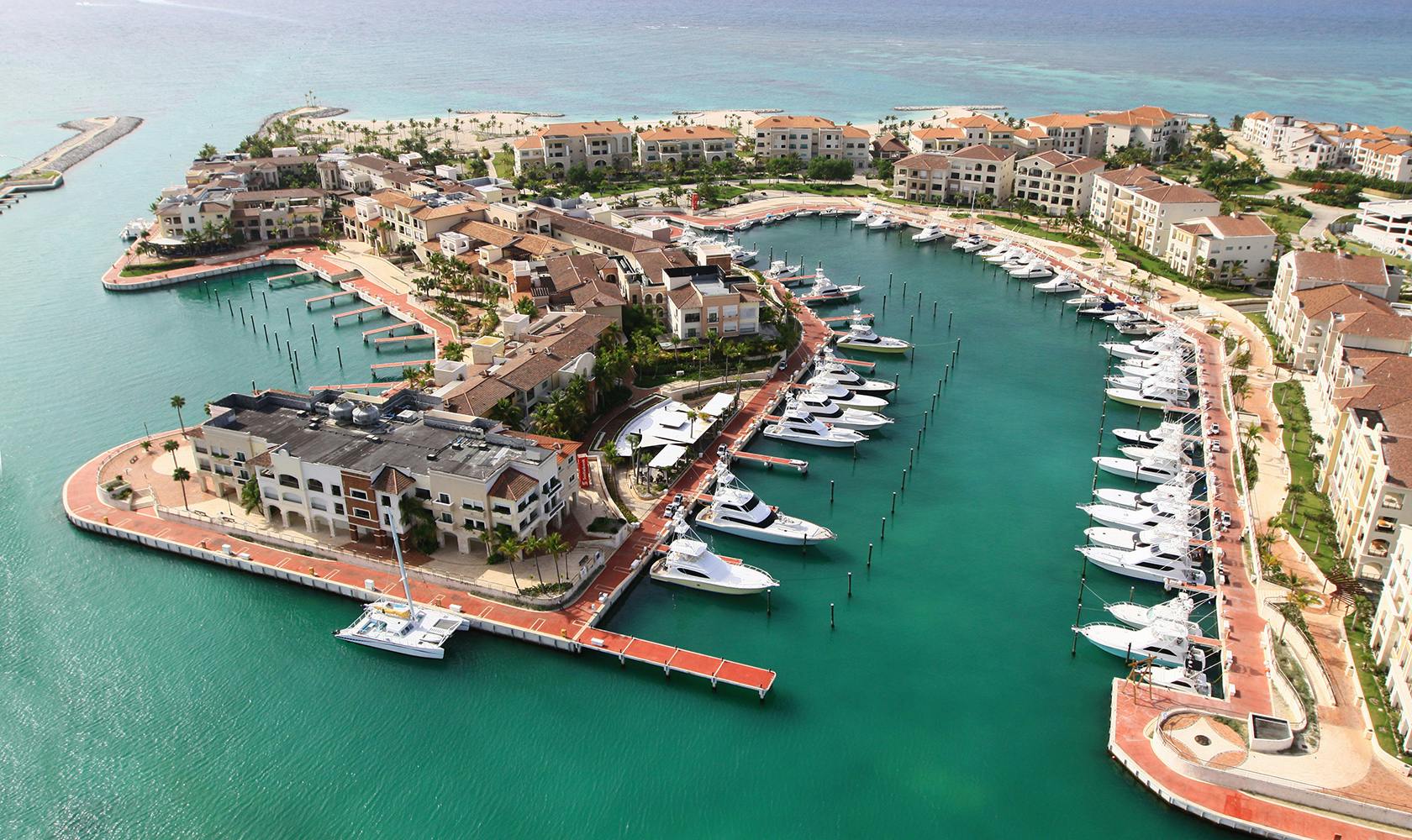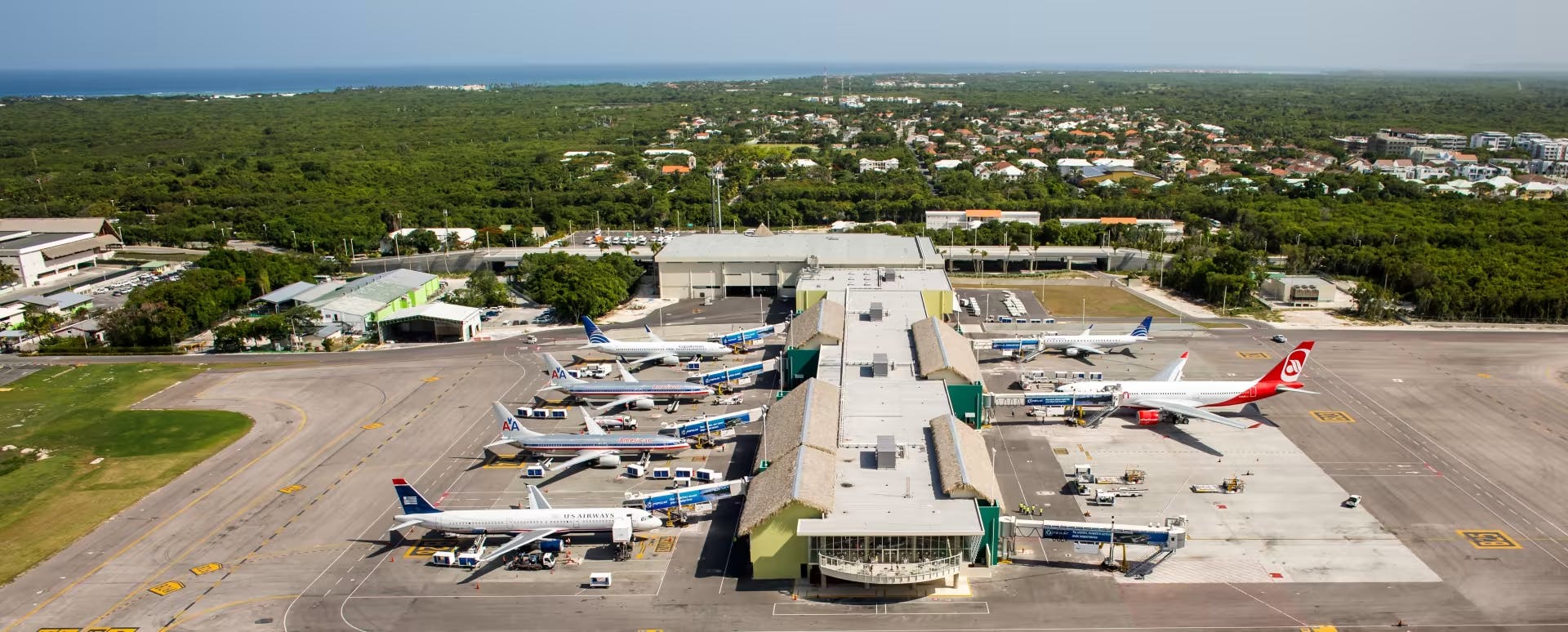


Getting Around
Public Transportation
The Dominican Republic’s public transportation system is surprisingly modern and extensive. Dominicans are constantly on the road–visiting family in the countryside, conducting business, or shuffling to school. Taxis are ubiquitous, Uber is available in three major cities–Santo Domingo, Santiago, and Puerto Plata–and there’s always a form of bus service, big or small, going to any town or city you want to explore. Aside from being the most affordable way to travel, public transportation is a great way to glimpse every day life in the DR, and is guaranteed to be a memorable experience.


Santo Domingo Subway
Metro Santo Domingo operates two lines, mostly used by residents commuting to work. But there are a couple of stops convenient to sights. Line 1 runs north to south along Máximo Gómez Avenue, from the Villa Mella area all the way to Centro de los Héroes, where Congress, the Supreme Court of Justice, and the Department of Migration, among other government offices, are located. The Casandra Damirón stop on Line 1 lands you directly into Plaza de la Cultura, home to key museums and the National Theater. Line 2 runs east to west on John F. Kennedy Avenue, passing by Ágora Mall at the Pedro Mir stop, and the Felix Sánchez Olympic Stadium. A roundtrip subway fare costs RD$15 for a rechargeable metro card, plus RD$40 roundtrip, or RD$80 for a day-pass. The subway operates daily from 6am-10:30pm.


Taxis
Taxis are easily located in major cities and towns, usually stationed outside major bus stations, or hotel and tourist zones. In the big cities like Santo Domingo, Santiago, and Puerto Plata, your best bet is to call one of the major 24-hour taxi service companies–ask your hotel or a local for the best ones, and to make the call for you. In Santo Domingo, for instance, Apolo Taxi is popular, as is Aero Taxi. When calling, ask the taxi phone operator to confirm the color of the car, and the estimated wait time. You should also ask for confirmation of the fare to your destination –rates within cities are set by the taxi association.


Uber & Cabify
The popular ridesharing app service UBER launched in the Dominican Republic in 2015, and is now operating in three major cities: Santo Domingo, Santiago, and Puerto Plata. Cabify also operates in Santo Domingo. These apps are as safe to use in the DR as in any other destination. More visitors are resorting to them because of the language barrier–no need to speak to a taxi operator on the phone. The cars are also usually in better condition, with working seatbelts and air-conditioning, in addition to reduced fares when there is no heavy traffic.
01
0
Long Distance Local Travel


Interurban Coach Bus Service
One of the major perks of the DR is the convenient, affordable large coach bus services connecting the major regions in the country. There are three reliable companies providing daily service to major hubs, in modern, air-conditioned buses with Wi-Fi and movies. Metro Tours buses connect Santo Domingo, Santiago, Puerto Plata, Sosúa, La Romana/Casa de Campo, and there are daily departures to Port-au-Prince, Haiti. Caribe Tours serves Santo Domingo, Santiago, Puerto Plata, Sosúa –with more frequent daily departures–Barahona, Cabrera, Jarabacoa, La Vega, Montecristi, Samaná, and other towns in the Dominican Republic, as well as Haiti. Expreso Bávaro is the only major bus service connecting Santo Domingo and Bávaro every day, ideal for Punta Cana travelers.
Bus fares range between RD$200-RD$500 one-way. Make sure to arrive at least one hour prior to departure to ensure seating space, and bring a solid jacket or scarf with you on board, as these buses tend to keep the air-conditioning at its lowest point.


Low-cost Minivan Bus Service or Guaguas
Smaller, privately-owned and operated minivan buses called guaguas travel scheduled routes daily, taking travelers within a city, or long-distance to small and large destinations around the Dominican Republic.
The long-distance guaguas are just as comfortable as the large coach buses, seating no more than 20-25 passengers, each with a dedicated seat and offering Wi-Fi connection. Look out for the ones labeled “Expreso” to your destination–they don’t stop along the road to pick up passengers, unlike the regular ones, which shortens your trip.
01
0
In-City Transportation


Minivan Buses
The inner-city guaguas tend to be white vans, stopping to pick up or drop off anyone along the designated route as many times as it takes, and are the slowest form of getting around. Passengers are crammed in, and space appears magically just when you think there isn’t any left. It’s also the cheapest way to travel within a city or town limits. Be sure to carry small change for the fare, as these vans don’t carry much cash–you could be stuck paying more otherwise. Each guagua has a driver, and a conductor who calls out for passengers along the road, handles collecting fares, and hollers out requested stops to the driver. Inform the conductor of your destination as soon as you board, and prepare to pay right away or as soon as requested.


Motorbike Taxis Or Motoconchos
Motorbike taxis are popular among locals in the big cities like Santo Domingo or Puerto Plata, and even Jarabacoa, because they are the cheapest and fastest way to get past traffic. But this is also the most dangerous way to travel, particularly in cities or areas of heavy traffic. Many motorbike taxis don’t provide helmets, though they are legally required to do so. Riding a slow bike taxi in the mountain towns of Jarabacoa and Constanza, however, is a great way to take in the spectacular scenery. The official motorbike taxis usually wear a vest of neon color, but note that it is not always the case. Ask for the motoconcho hub in your town, or get a referral from your guesthouse. Fares range from RD$25 to RD$75 in-city, depending on the distance.


Shared Taxis or Conchos
Also known as carrito–conchos, carritos, or just conchos, these four-door sedans are shared taxis, similar to the in-city guaguas because they travel specific routes and stop anywhere on the route as requested by passengers. You can find them in the big cities, as well as in towns and villages. They are a slightly more comfortable method than the guagua, but passengers are also crammed in at the back and the front. Fares range from RD$25-50 depending on the distance–significantly cheaper than a private taxi fare, which start at RD$150.
Highways
The Dominican Republic is well served by vast, modern highways connecting its major cities and coastlines, and linking the most popular tourist destinations. In good condition, they reveal the country’s glorious scenery, particularly along the highways from Santo Domingo to the Samaná Peninsula or Jarabacoa, and along the coast of Puerto Plata.
Familiarize yourself with these five major highways–particularly if you plan on renting a car and exploring the country’s multiple regions. Expect tolls, depending on your origin and destination–inquire at your guesthouse before launching your trip. For instance, the highway from Santo Domingo to Boca Chica bears a single tollbooth, while there are four from Santo Domingo to Bávaro. Toll fees vary, ranging from RD$60 to RD$100 per booth. Carry small change in Dominican pesos. Dollars are accepted, but any applicable change will be in the local currency.


Route 1:
Autopista Duarte – Santo Domingo to Santiago
The Duarte Highway is a divided four-lane highway linking the north and south of the Dominican Republic. It’s a two-hour scenic drive from the capital up to the second largest city of Santiago, also leading towards Jarabacoa and La Vega.


Route 2:
Autopista Las Américas
This highway links Santo Domingo’s Las Américas International Airport with the city of Santo Domingo going west, or to the beach town of Boca Chica going east. It eventually meets with the Autopista Coral towards La Romana.


Route 3:
Autopista Oscar de la Renta
This highway, also known as Autopista del Coral, links Santo Domingo with the Punta Cana resort area, bypassing Higüey, in less than three hours, and reaches La Romana in less than one hour.


Route 5:
Carretera de Puerto Plata
This two-lane highway runs along the North Coast in one of the most colorful, quaint drives in the country. It goes past fishing villages, beaches, distant verdant hills, and every day campo life.


Route 7:
Santo Domingo to Samaná Highway
Route 7 links Santo Domingo with the northeastern Samaná Peninsula. The views on Route 7 are unparalleled, with dense coconut tree-punctuated hills from a coconut oil plantation, towering over a bright blue sea. An additional option is to reach Las Terrenas via the Boulevard Turístico del Atlántico or Route 133, worth the additional US$11 in toll fees for its breathtaking, winding coastal views, and a panoramic lookout stop over the Bay of Cosón.
01
0
Car Rentals
All the major car rental companies are present in the Dominican Republic, located at international airports, as well as in-city. For the best rates, book online ahead of time on travel sites.
Renting a car is useful if you’re staying in one particular region–such as Puerto Plata, Punta Cana, Samaná, or Barahona–to better explore the long coastline. In-city rentals are also available; stick to well-known brands or ask your hotel for referrals. Pick a four-wheel drive for added safety, and make sure you have a good country roadmap on hand. Investing in a reputable travel guidebook is a solid investment as well, and learning a few key Spanish phrases.
To be eligible to rent a vehicle, you must:
- Be 25 years of age; and
- Bring a valid drivers’ license from your home country.
Go for full insurance coverage, including the Casa del Conductor option, which ensures you are not immediately sent to jail in case of a serious accident injuring another party. Cars are often rented with a full tank, and must be returned as such.
Domestic Flights
Getting around the DR by charter flight is a possibility to quickly reach the various regions. The domestic airports listed below are used for charters or for limited scheduled flights between the DR’s major tourist hubs: Santo Domingo, Samaná, Punta Cana, Puerto Plata, and Barahona. Charter flight companies include Air Century, SAP Group, TAS Jet, and Aerolíneas Mas.
La Isabela International Airport (JBQ)–also known as Aeropuerto Higüero–services domestic commercial and charter flights, including daily departures to Haiti and Cuba.
Arroyo Barril International Airport (MDAB), located in Samaná, services domestic flights coming from Punta Cana.
María Montez International Airport (BRX) sits right outside the city of Barahona, and serves primarily domestic flights.
Punta Cana International Airport (PUJ) services domestic charter flights, aside from international ones.
All you need to know
01
0























